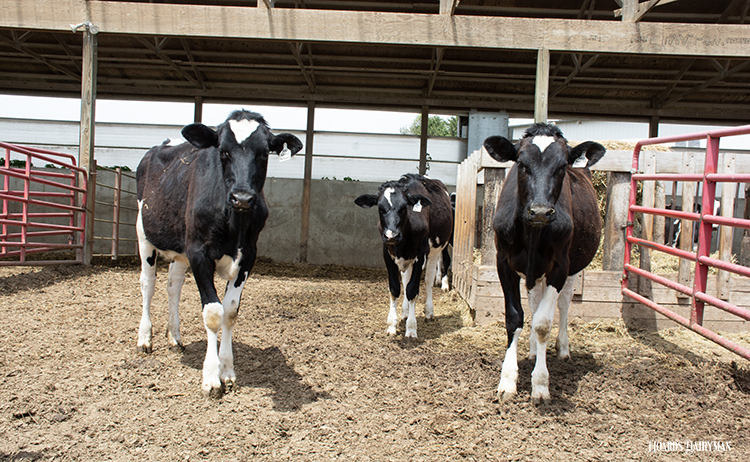
Breeding heifers to calve in around 2 years old puts them on a productive track to begin paying off the costs of their rearing and avoid mounting up additional expenses while they remain open. Calving age is also a balancing act, though, because when animals start their productive life before they are mature enough to do so, it can sacrifice future performance.
Reduced milk production, more disease, and greater culling are all correlated with animals that enter the milking herd at less than 85% of mature bodyweight, said Iowa State University’s Larry Tranel. Gavin Staley, BVSc., a veterinarian with Diamond V, considers these to be “Peter Pan” heifers — they haven’t yet grown up, and once they are milking, the development they should have experienced can’t be made up.
“They’ll try to grow, but it’s going to be at the expense of lactation,” said Tranel on a Dairy News and Views podcast. Sharing a presentation developed by Staley, he cited that it is seven to eight times more inefficient for animals to work toward reaching that bodyweight threshold after calving than before.
It might seem most cost-effective to get heifers into the milking herd as soon as possible, but the effects of this stunted development mean that those animals likely won’t stick around in the herd as long. Tranel said a cow usually doesn’t pay off its rearing cost until sometime in its second lactation. To make the most out of the genetic and management investment a farm is making for each animal, three lactations and beyond are the most desirable. Early calving heifers are less likely to reach this age.
Heifer development varies by farm but calving at 21 or 22 months might be considered early. To gauge how your first-lactation animals are doing, Tranel advised monitoring production of these animals at Week 10. This number will approximate your annual daily herd average, he said.
Having heifers that reach those metrics and remain in the herd for multiple lactations means they need to be big enough and developed enough when they enter the milking herd. Cows will keep growing some in their first and even second lactation, but Tranel and fellow extension specialist Gail Carpenter reiterated the 85% benchmark at first calving.
Carpenter emphasized the need to calculate this number for your herd specifically. Breed averages are okay, but they won’t capture the variation on your farm due to genetics, feeding, management, and more. Use a scale (or weigh tapes) with third and fourth lactation cows that are between 100 and 200 days in milk to get an accurate picture of your herd’s mature bodyweight.
Cull cow weights are not a great resource, she cautioned. Those are often sick, underweight cows or hard-breeding, overweight cows and probably aren’t representative of the herd.
With an accurate picture of how big heifers need to be when they calve, you have another tool to help them thrive in the milking herd. Breeding for productive life, preweaning calf care, and proper nutrition are all supported when heifers don’t have to spend added energy compensating for a lack of growth when they should be making milk.








